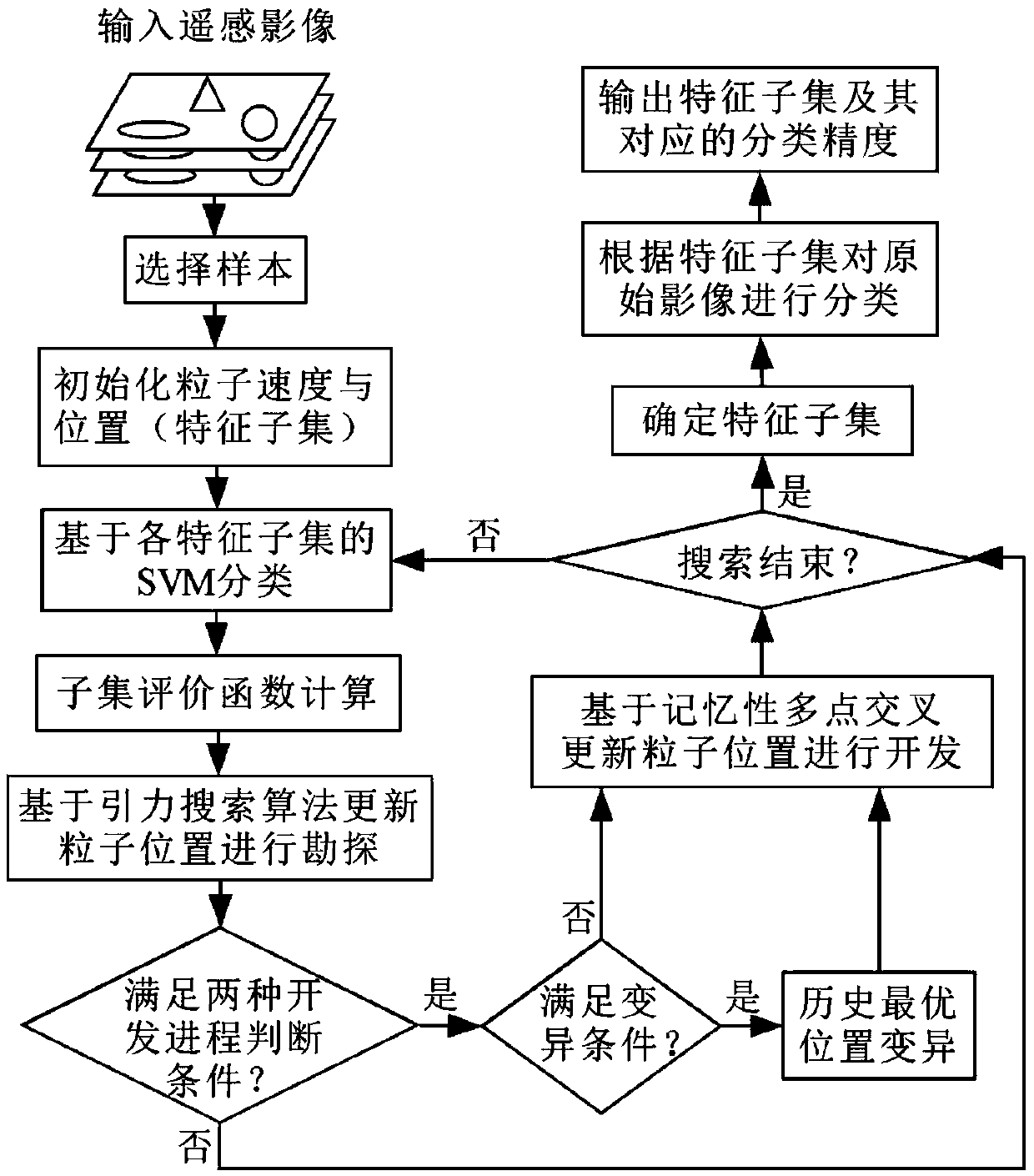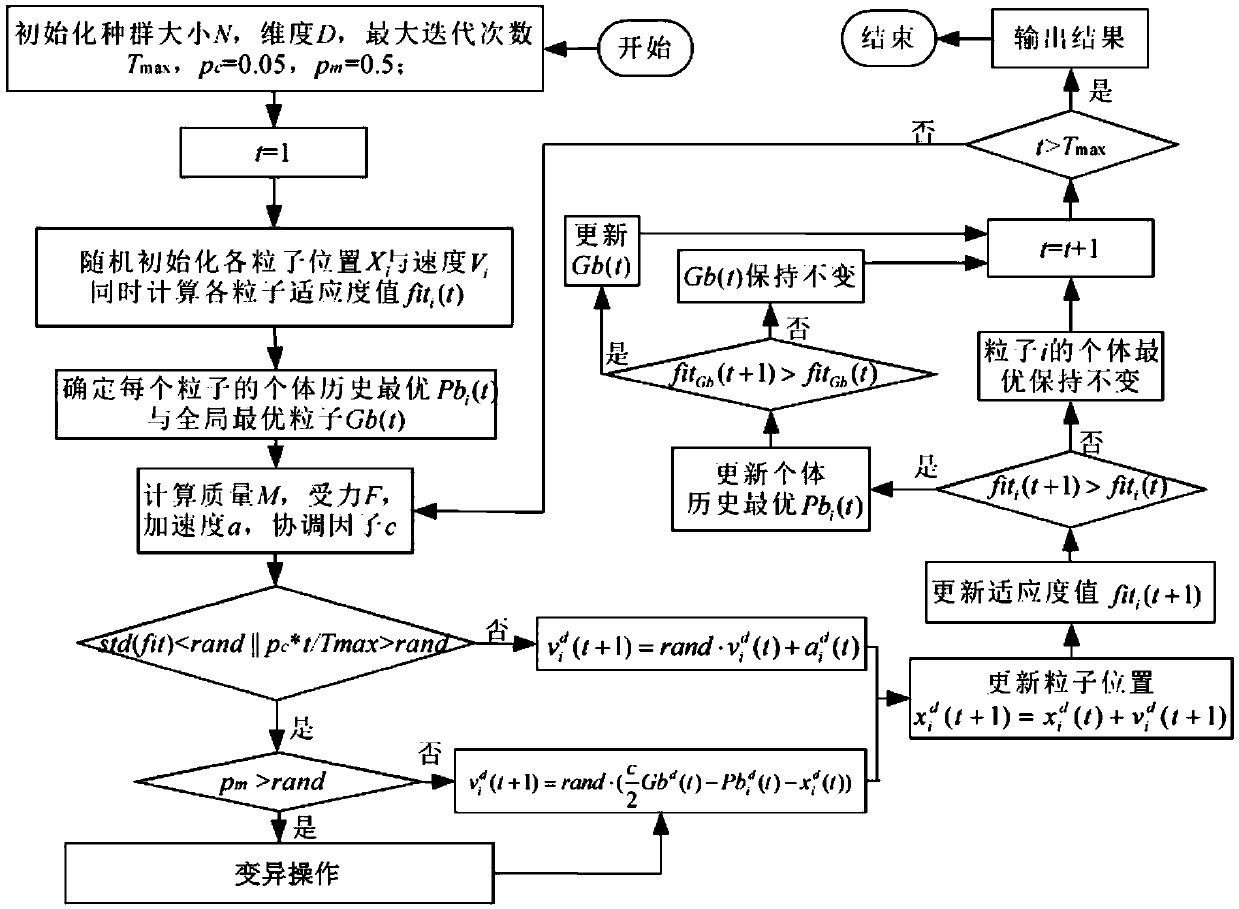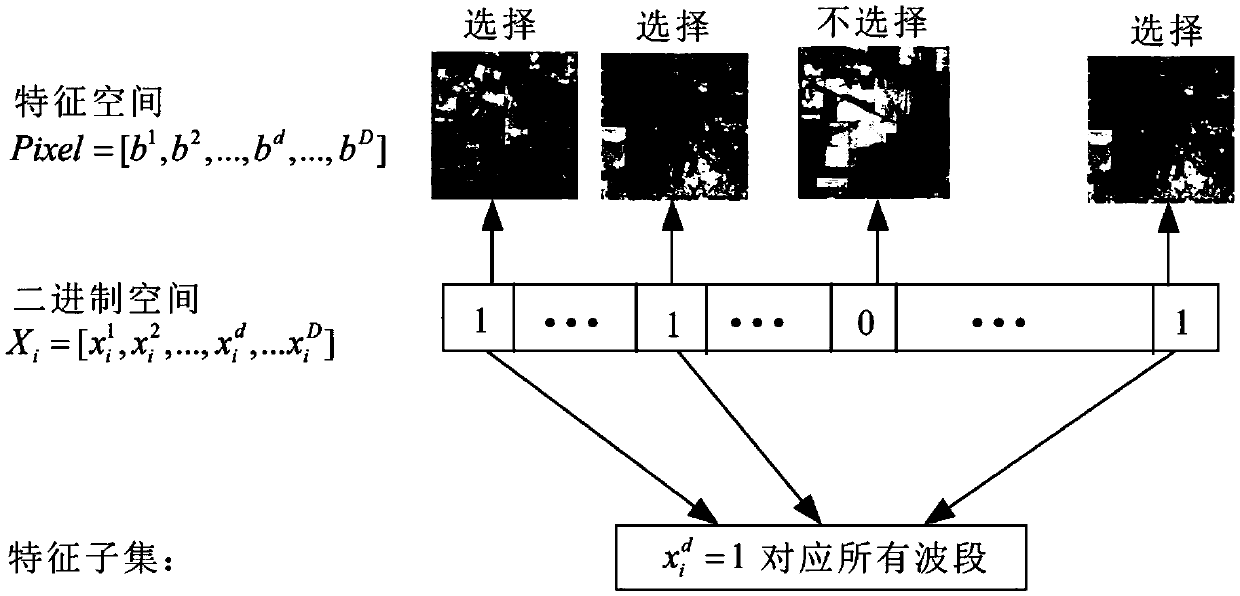Memory multi-point crossover gravitational search-based feature selection method
A feature selection method and gravitational search technology, applied in genetic models, genetic rules, instruments, etc., can solve problems such as lack of memory, premature convergence, and insufficient development capabilities of gravitational search algorithms
- Summary
- Abstract
- Description
- Claims
- Application Information
AI Technical Summary
Problems solved by technology
Method used
Image
Examples
Embodiment Construction
[0038] The specific implementation of the method of the present invention will be further described below in conjunction with the accompanying drawings.
[0039] The feature selection method based on memory multi-point cross-gravity search provided by the present invention is suitable for processing hyperspectral remote sensing images in the Indian Pine region acquired by an AVIRIS (Airborne Visible Infrared Imaging Spectrometer) sensor. The spatial resolution and spectral resolution of the original AVIRIS data are 10m (meter) and 10nm (nanometer) respectively, and the spectral range covers 400-2400nm, with a total of 224 spectral segments. Since the values of 4 bands are all 0, they are filtered out. In addition, on the IndianPine image, there are 20 bands, including bands [104-108], [150-163], and 220 whose values are easily affected by water absorption bands, and these bands are also filtered out in this case. Therefore, the IndianPine image used in this case uses a to...
PUM
 Login to View More
Login to View More Abstract
Description
Claims
Application Information
 Login to View More
Login to View More - R&D
- Intellectual Property
- Life Sciences
- Materials
- Tech Scout
- Unparalleled Data Quality
- Higher Quality Content
- 60% Fewer Hallucinations
Browse by: Latest US Patents, China's latest patents, Technical Efficacy Thesaurus, Application Domain, Technology Topic, Popular Technical Reports.
© 2025 PatSnap. All rights reserved.Legal|Privacy policy|Modern Slavery Act Transparency Statement|Sitemap|About US| Contact US: help@patsnap.com



